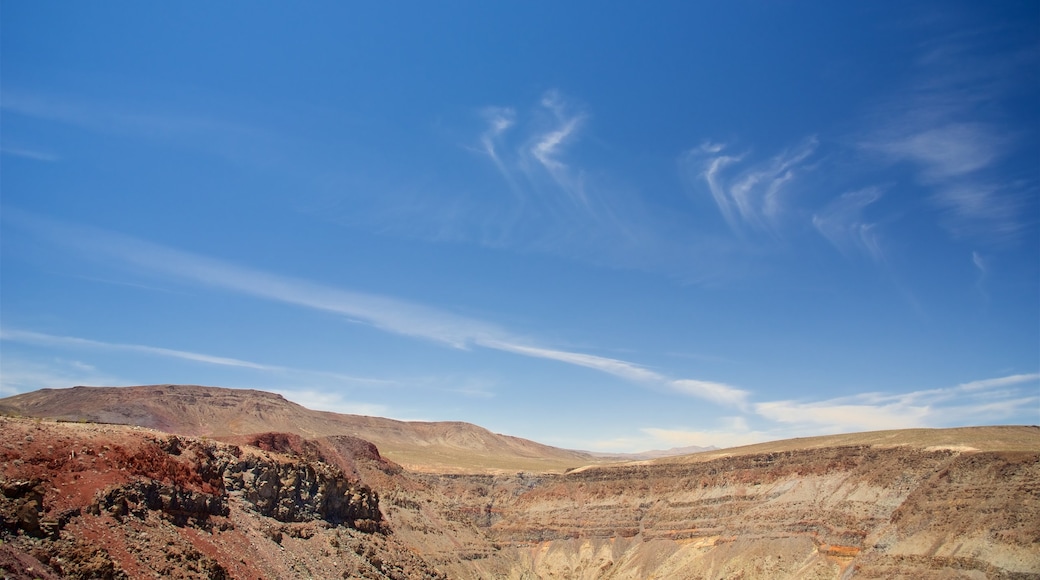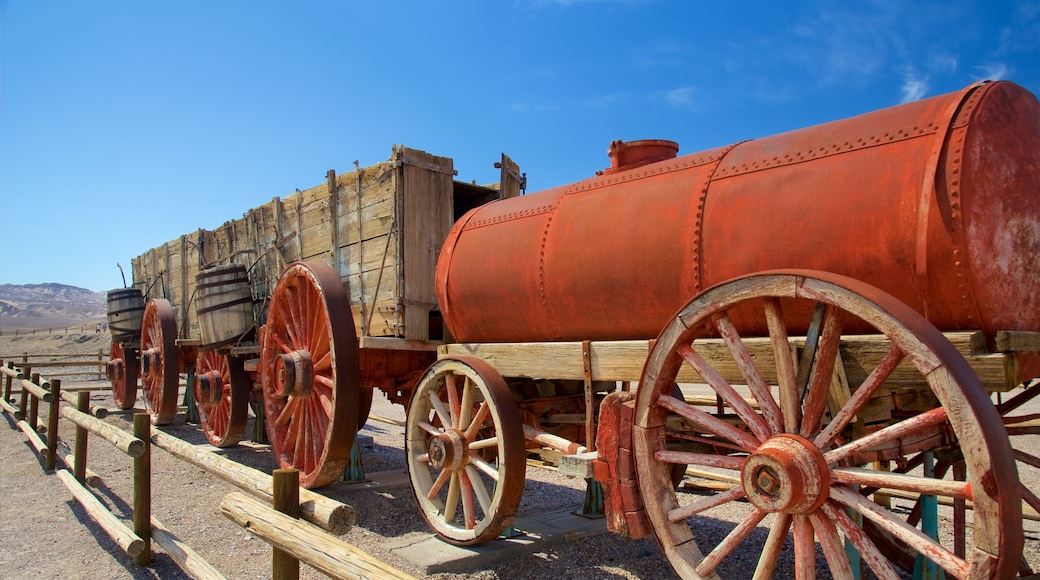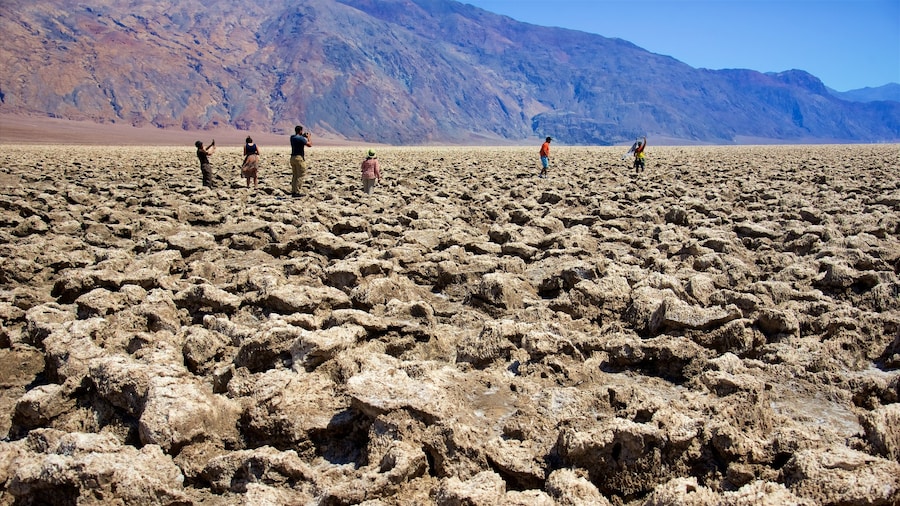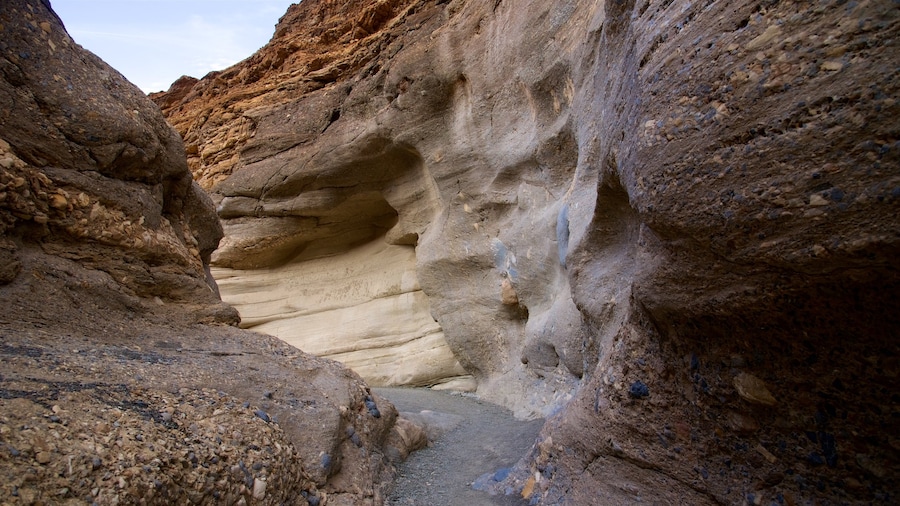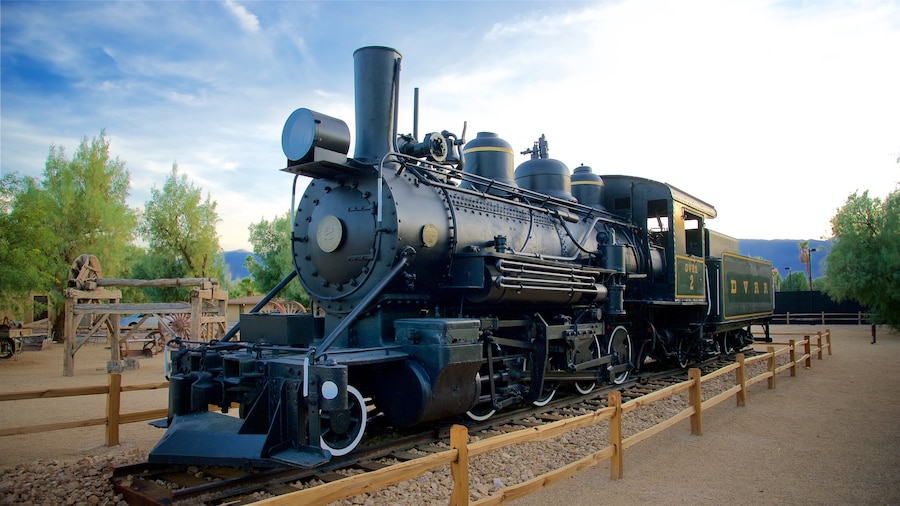Death Valley National Park is the continental United States’ largest park. It’s also the hottest, driest and lowest. Despite harsh conditions, the park’s more than 3 million acres (1.3 million hectares) aren’t simply desert plains. Find mountains, canyons, sand dunes, extinct volcanic craters and even palm trees and wildflowers.
In pioneer days before modern transportation allowed crossing the hot, dry expanse in an hour or two, the area truly was a valley of death. When temperatures reach 116 F (47 C) in the shade and 200 F (93 C) on sunny ground, heat exhaustion sets in quickly. Even if you won’t be hiking during your visit, have a full tank of gas and carry extra water for emergency needs.
Once you’re prepared for the conditions, enjoy the unusual scenery. Gaze across stretches of flat land noting waves of heat rising into the air with snow-capped mountains in the background. Look for small oases of vegetation where wildlife gather for water and food. Some ponds even have fish. This is the place to see roadrunners and coyotes. Over 300 bird species have been sighted in this large, varied terrain.
Hike here with appropriate caution. Conditions are best from October through April. Many trails are 1 mile (1.6 kilometers) or less over easy terrain. Badwater Salt Flat at 282 feet (86 meters) below sea level is North America’s lowest location. Natural Bridge Canyon ends at a dry waterfall. For adventurous hiking, make your own path to buttes, arches and even icy peaks in winter. Try backpacking, biking and backcountry camping in this challenging terrain.
Ranger-led activities offer good choices. Check availability of paleontology tours, moonlit hikes and night sky viewing through telescopes.
Learn more about the area’s geology and history at Furnace Creek Visitor Center and Scotty’s Castle and Visitor Center. Some may remember the television show Death Valley Days. Visit the Borax Museum at Furnace Creek Ranch to learn about the reality of the mining period in Death Valley.
Like other national parks in the U.S., Death Valley National Park offers affordable and exciting adventures for all types of travelers.



